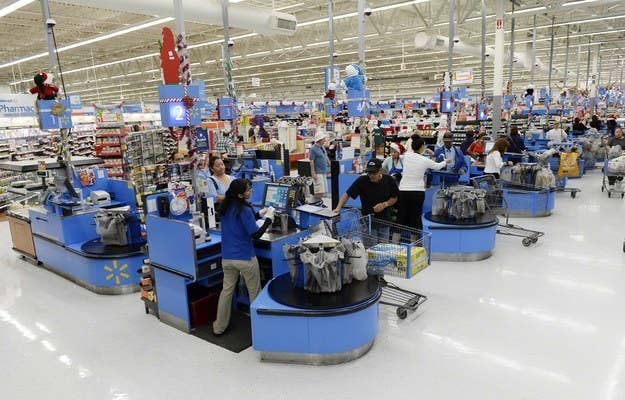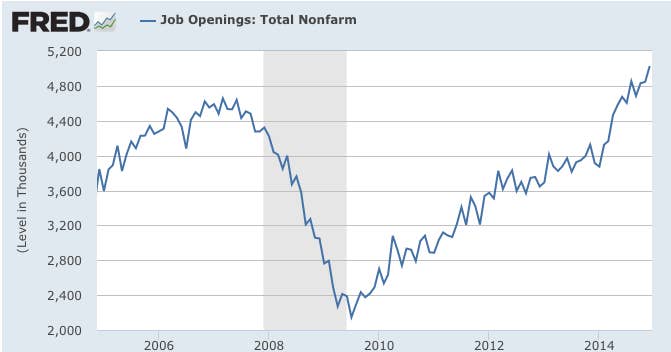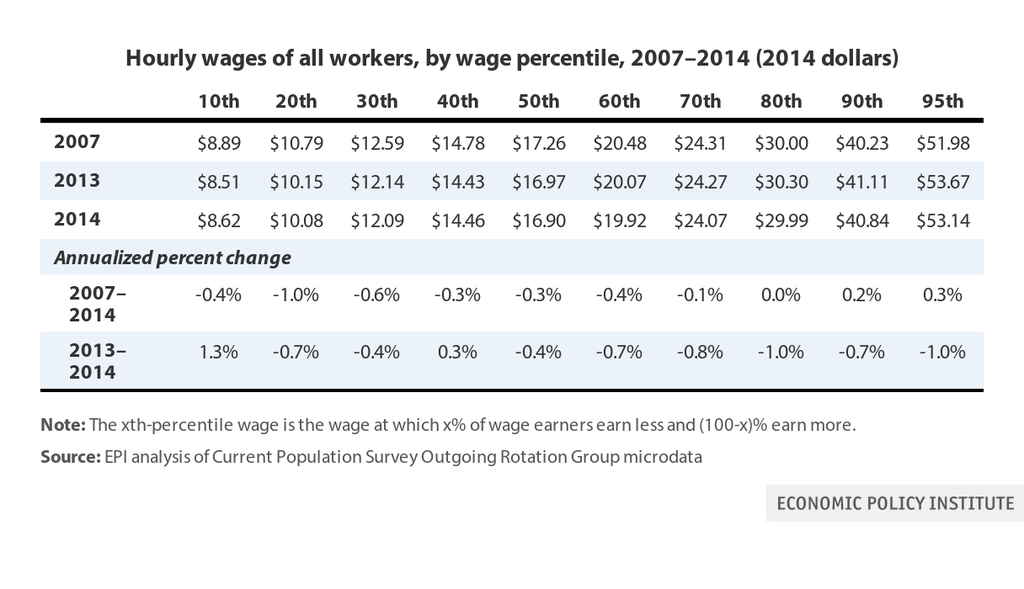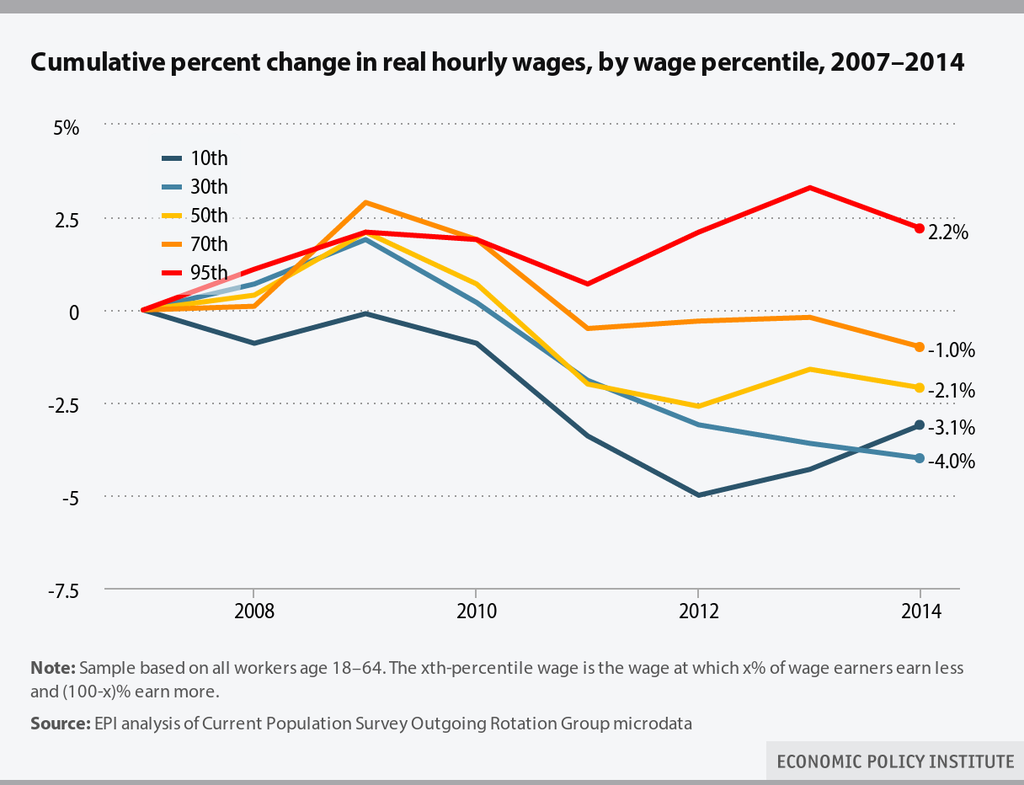
Walmart on Thursday became the latest — and by far the largest — employer to announce a wage increase for its lowest-paid employees, reflecting what could finally be a strong economy paying off for low-income workers.
Walmart said that in April, the lowest wage in is U.S. stores will rise to $9 an hour, and go up to $10 in 2016, with some managers getting a raise to $13 that would eventually go up to $15. Overall, the company said, the new pay structure would affect some 500,000 workers. Gap, Ikea, and the insurance company Aetna have all announced similar plans to increase their wages, but none will have the effect of Walmart, the country's largest private-sector employer.
"It's one more sign that the job market is getting tighter," said Gary Burtless, an economist and senior fellow at the Brookings Institution. Burtless pointed to a range of data indicating that the labor market has improved significantly. Overall job growth — some 3.1 million new jobs created in 2014 — is at its highest level since the late 1990s, while the unemployment rate has dropped to 5.7%.
The number of job openings hit 5 million in December, the highest level since January 2011, the Labor Department said, while the number of new hires, 5.1 million, was the highest since November 2007. Also, more workers are feeling comfortable quitting their jobs, with the level of quits climbing throughout the recovery, with the "quit rate" hitting 1.9%, which Burtless said was "close to where it is in a fairly mature economic expansion."
The number of job openings has surpassed its pre-recession high.

"There are unmistakable signs that it's easier for people stuck in a low wage job to find a slightly less poorly paid job, there are more job openings available, and a lot of workers are taking advantage of that," Burtless said. For low-wage employers like Walmart, employee turnover can be quite high, so any tightness in the labor market can make it much harder to hire new people.
And while wages have been largely stagnant following the recession, there have been some gains among the lowest-income workers. The left-leaning Economic Policy Institue released data showing that, from 2013 to 2014, real hourly wages fell for every wage level except a small increase at the 40th percentile and a bigger jump at the 10th percentile, which EPI largely attributed to state and local minimum wage increases.
Wages for the lowest-earning workers increased last year.

Almost immediately following Walmart's announcement, the National Retail Federation said that the wage increase was "just another example of the power of the marketplace" and cautioned against "government mandates that arbitrarily require businesses to implement politically driven policy." The NRF has long opposed an increase in the federal minimum wage.
Josh Bivens, the research director at EPI (which receives some funding from unions), responded, calling the NRF's argument "a mix of stupid and self-serving" and saying that some 27 million workers would see thier wages go up if the federal minimum wage were increased to $10.10.
"The fact that an announcement that some workers in one company might get a raise is treated as a newsworthy blockbuster shows just how far we have to go before we have an economy that is genuinely working for most Americans," Bivens said in a statement.
But since 2007, only wages for the highest earners have gone up.

